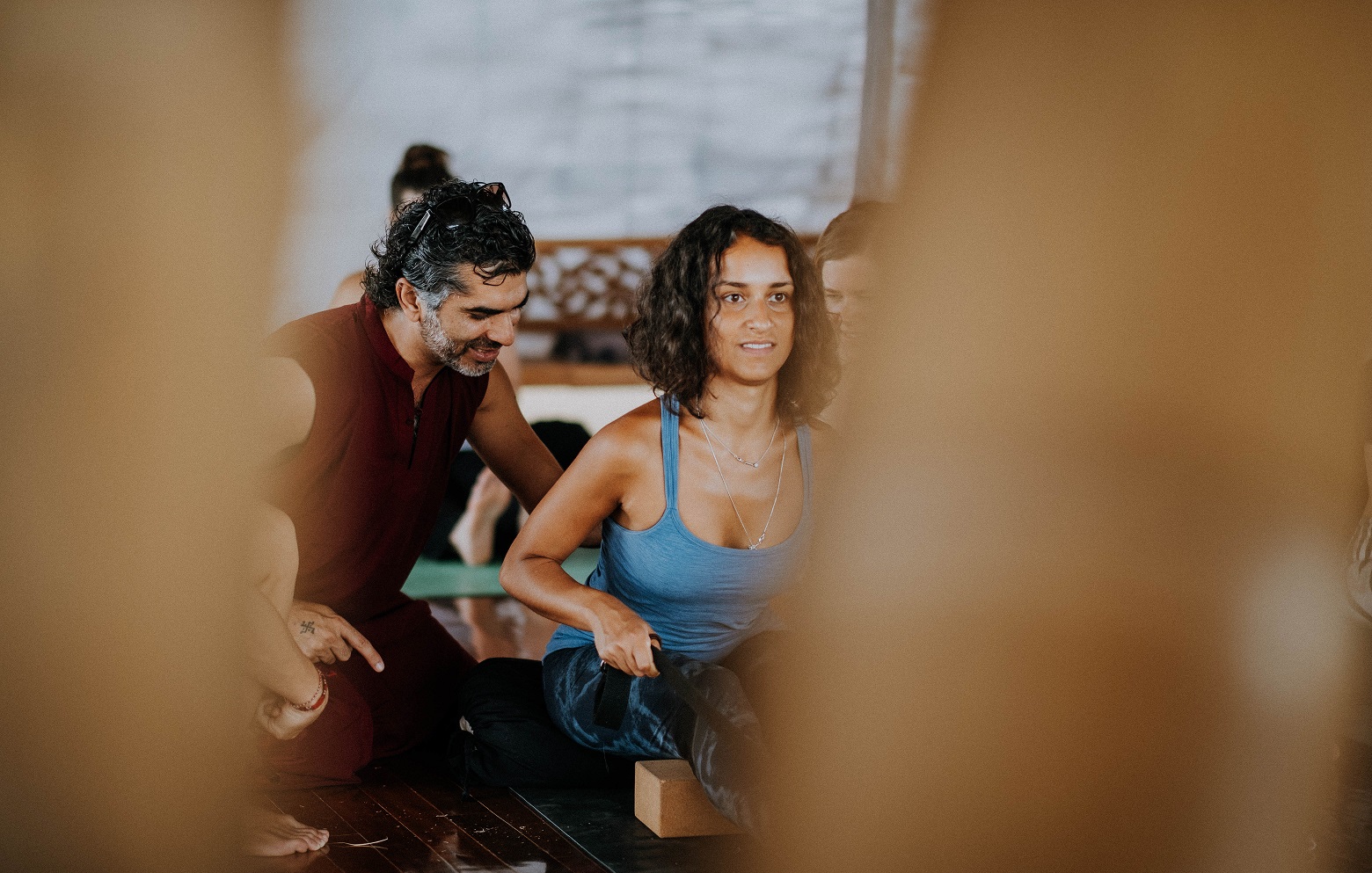Seven years ago, when I was contemplating doing a Yoga Teacher Training Course in Bali, I was lucky enough to be recommended a proficient trainer by my yoga teacher. I didn’t do much research about the market nor the trainer’s background, and pretty much just signed up on the spot when the opportunity presented itself.
Fast forward to today, being a full-time yoga teacher since 2015, and having attended and hosted numerous teacher trainings, workshops, and other events internationally, I have to admit that it was truly a blessing in disguise that my very first training was done with a trainer who is not only deeply knowledgeable but whose life philosophy resonates with mine. Knowing what I know now, if you asked me I would never again blindly invest a small fortune in anything without thoroughly researching the target of my investment and my available options. What foolhardiness!
Today I’m going to share with you (and my younger self!) to look out for when deciding on a Yoga Teacher Training Course. There is no right or wrong, just what best meets your needs and intentions. It is a very individual choice, and I hope that by the end of this article you will have gained more clarity, confidence and are more empowered to make the best decision for you in your yogic journey.
Read More: Yoga as a Physical, Energetic and Mental Healing From a Yogic Psychosomatic Point of View
1. Decide on the type of training which you prefer/works best for you.
Generally, there are two categories of Teacher Training Courses: immersive and part-time. People who opt for immersive trainings often choose to go abroad for the training rather than attend a local one. Having done a three-month long part-time training locally in Malaysia and a one-month immersive training in India, I have discovered these major differences:
Part-time training.
Trainings often happen every weekend, over the course of a few weeks.
This would be an ideal option if you have a full-time job and are unable to take a large chunk of time off work. Which means your flow of income is not tremendously affected.
Most prefer an immersive training to a part-time one because as the name itself suggests, you really dive deep into the experience. However, although a part-time course is less intense, the days in between training and the longer time frame allow you more time to process and digest whatever you are learning, and if need be, refer back to your trainer when you next meet.
Related Posts: Yoga TTC Turning Point of a Student Life.
Immersive training.
Immersive trainings enable you to really enter into the world of yoga. You uproot yourself from your usual lifestyle, and enter a new environment where you eat, sleep, and breathe yoga every day and night. You come face to face with the practice, and yourself.
Most people choose to go abroad for immersive trainings, often to more exotic locations where yoga, amongst other spiritual and holistic therapies are practiced extensively, for example India and Bali. Doing an immersive training abroad would really give you the full experience, however if you are looking to launch a career in yoga, doing an immersive training locally may help you get the kick-start that you need, as your trainer/seniors would be able to recommend you to local studios/students, plus the yoga school of your choice would already be well-reputable in the community and people would rather go with local graduates of schools they are familiar with rather than foreign ones.
As mentioned before, there is no right or wrong, just what best meets your needs and intentions. Both types of trainings lead to many profound personal discoveries which not only enrich your personal life but also add to your unique experience as a teacher.
2. If you decide to go abroad, choose your destination wisely.
Thoroughly research the location(s) of your choice. Do you resonate with the country’s culture? Do you prefer the city or countryside? Is the location ‘party central’ or laid back and chill? Bear in mind that if you choose to go to a country which is substantially poorer than your own, you should expect a certain degree of discomfort during your travels.
3. Familiarize yourself with the Yoga Alliance standards, and/or your country’s equivalent.
Generally, a 200 hour yoga teacher training in Bali, certification is the foundation of a yoga teacher’s formal training. This is followed by a 300 hour yoga teacher training in Bali, certification. Upon completing both, you will be a 500-hour certified teacher. It is possible but rare to complete all 500 hours in one go. I personally would not recommend doing so, as it is necessary to have some personal experience in the real world before going back to school to further your studies.
Read More: Are You Ready For 200 Hour Yoga Teacher Training Bali
That being said, not all yoga schools are Yoga Alliance certified. Many schools offer ‘200-hour equivalents’, which are generally acceptable in the market. It isn’t necessary to attend a Yoga Alliance affiliated school, the importance of a Yoga Alliance certification depends on where you intend to teach in the future, but in my experience almost any studio/student will engage your services as long as you are proficient at what you do, regardless of certification/credentials.
4. Speak to them on the phone.
Once you have checked out schools on the Internet and narrowed down your choices, request to speak to someone from the school. A person’s voice and the way they speak about their course will tell you if it’s something you’ll resonate with. The way a school responds to you is also often indicative of the type of service you will get on their training.
5. Post-certification.
Yay, you did it! If you’re anything like me, you would be feeling like as if those hundreds of hours were nothing but a tiny tiptoe into the vast ocean of yoga! Many new graduates find it difficult to find guidance early in their career. Keep in touch with your course mates and keep growing together. If you are able to, approach a studio/teacher to start an apprenticeship or apply for an assistant teacher position. Give your contact number to studios/gyms – they almost always require new/substitute teachers every now and then. Start regular community classes. Teach your friends/family. Just keep teaching until it becomes second nature. The age-old adage runs true: practice makes perfect. Keep teaching, while maintaining your personal practice. Keep widening your horizons by attending workshops, events, and courses. Although you are certified to teach, there is no harm in attending other teachers’ classes. Always remain a student. The more you are open to learning, the more you will grow.
Good luck!
Prabh Lehri
Student and Teacher at Deep Yoga academy





